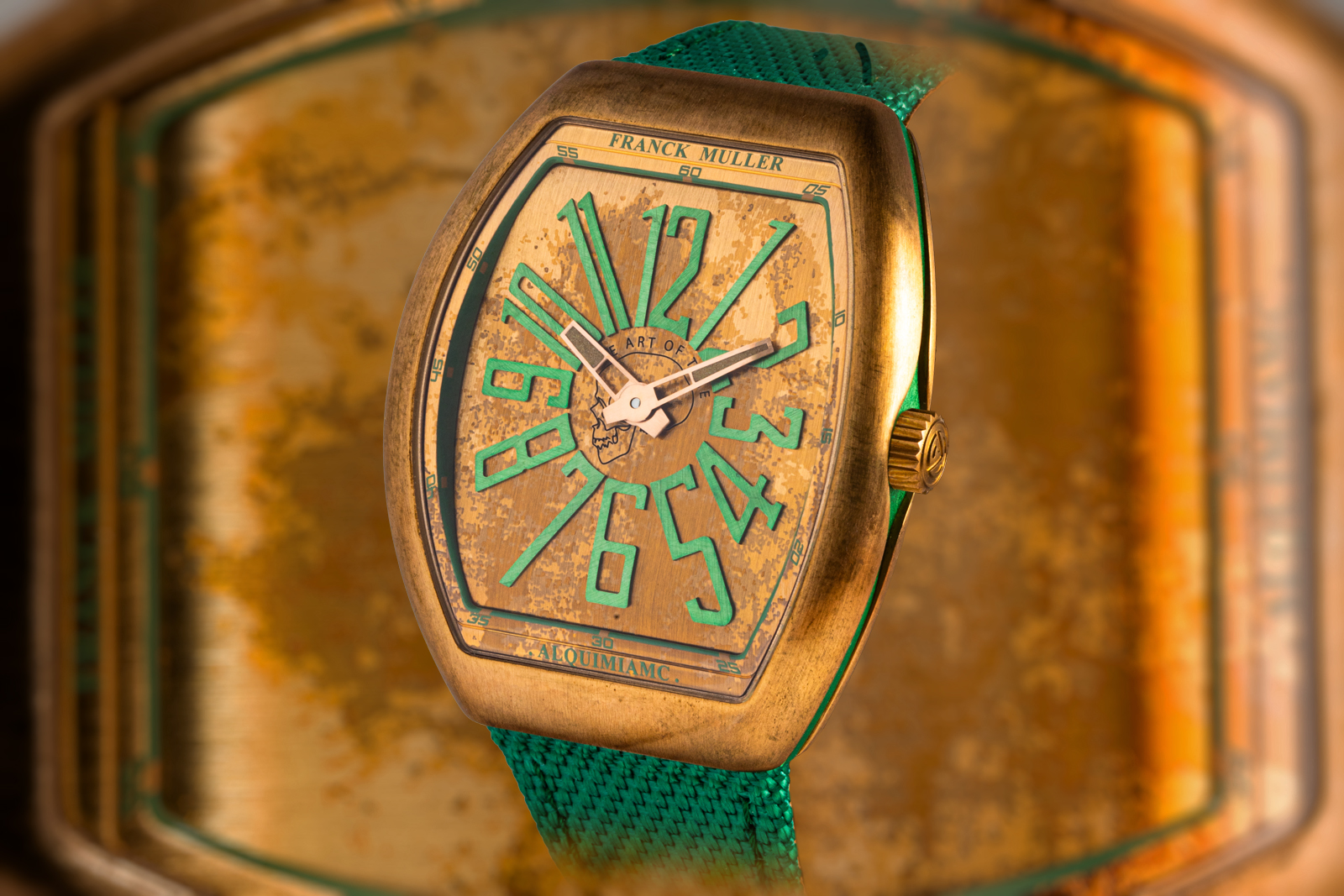Franck Muller’s Vanguard Mexico Edition is Patina’ed, Slim, Minimalist
The Vanguard Alquimiamc departs from its usual style.
Thin and time only, the Vanguard Slim is Franck Muller’s take on a modern dress watch. It’s been reimagined by the brand’s distributor in Mexico, Raconli Group, which tapped Marcos Cojab, an architect who’s also a sculptor working under the moniker Alquimiamc. The result is the Vanguard Alquimiamc clad in bronze – the case and dial are aged bronze, brushed by hand.
The 15-piece edition is made up of two variants, one in the familiar Vanguard configuration, and another with a minimalist dial free of numerals. Thanks to the styling and materials, both versions are intriguing designs that depart from the usual Franck Muller style.
Initial thoughts
The Vanguard Slim is one of Franck Muller’s most appealing current models. While the typical Franck Muller is oversized and sometimes over designed, the Vanguard Slim is the opposite – the curved case is under 10 mm high, giving it an elegant profile, while the dial is cleaner thanks to just two hands.
Earlier versions of the Vanguard Slim were already simple, but the Alquimiamc goes even further, with less obvious branding, though the version with numerals is still recognisable as the Vanguard. Instead the Alquimiamc emphasises the texture and shading of the aged bronze, which gives it an unusual appeal.
Bronze inside and out
The Alquimiamc edition is derived from the Vanguard Slim (also known as the Line Cut), a sleek time-only version of Franck Muller’s bestselling model. While the brand is best known for its extravagant styling, the Vanguard Slim variants are inherently cleaner.
The Alquimiamc edition has the same dimensions as the standard model, but in different materials. The case is large but thin, 41 mm wide but only 9.1 mm high. Here the case front and back are in bronze that’s first brushed by hand and then aged so it has a ready-made patina. And instead of the rubber insert on the case sides found on some Vanguard models, this has a green anodised aluminium insert.
The Vanguard Alquimiamc arrives in two dial variations. The first adopts the standard Vanguard design with large Arabic numerals on the dial, with Alquimiamc’s skull emblem in the centre. Brushed and treated green to match the case, the numerals are applied on the curved dial, while the hands are in brushed bronze.
The dial itself is also patinated bronze, but covered in clear lacquer to prevent further oxidisation. In effect, the patina is frozen in time.
The minimalist version is exactly that. The dial is essentially the same, but does away with the applied numerals, leaving a bare expanse of the lacquered, aged bronze. Because of the absence of numerals, this looks a little less like a typical Franck Muller.
Under the solid back is the FM 708, a thin automatic movement that’s a proprietary Franck Muller calibre. The brand hasn’t provided photos of the movement, but its specs, namely diameter, thickness, and 21,600 beats per hour frequency, lend credence to the in-house claim.
The 38-hour power reserve is short by modern standards, however, and might indicate the calibre borrows elements from existing constructions.
Key Facts and Price
Franck Muller Vanguard Alquimiamc
Ref. V 41 S AT ALQUIMIAMC NBR BR (VE)
Ref. V 41 S AT ALQUIMIAMC AP BR (VE) (minimalist dial)
Diameter: 41 mm by 49.95 mm
Height: 9.1 mm
Material: Bronze
Crystal: Sapphire
Water resistance: 30 m
Movement: FM 708
Features: Hours and minutes
Frequency: 21,600 beats per hour (3.5 Hz)
Winding: Automatic
Power reserve: 38 hours
Strap: Fabric and rubber with folding buckle
Limited edition: 15 pieces
Availability: At Franck Muller boutiques and retailers in Mexico
Price:
For more, visit franckmuller.com.
Back to top.